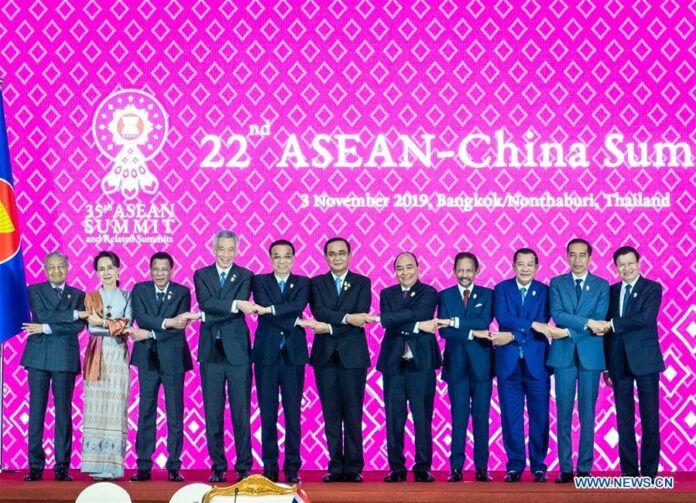
BEIJING (Xinhua) — China and Thailand have long engaged in friendly relations and trade cooperation and are looking forward to further development in their ties alongside strengthening regional cooperation.
Bilateral trade of the two countries stood at 66.4 billion U.S. dollars in the first nine months of this year, up 1 percent from last year.
China’s imports from and exports to Thailand in the same period rose 0.8 percent and 1.2 percent, respectively.
China’s trade ties with Thailand have been steady over the years, buoyed by a long friendly relationship between the two countries and the China-ASEAN Free Trade Agreement (CAFTA), said Yuan Bo, a researcher with the Chinese Academy of International Trade and Economic Cooperation under the Ministry of Commerce.
The two countries lifted tariffs on fruit and vegetable trade with each other since 2003 in accordance with relevant preferential tariffs treatment under the CAFTA, seven years earlier than the eventual founding of the China-ASEAN free trade zone.
The zero tariff pushed Thai fruit and vegetable exports to China in 2018 to 1.93 billion U.S. dollars, up by more than 10 fold from those in 2002, according to Thai media reports.
Investment between the two countries is also burgeoning. Thai companies were among the first foreign firms to invest in China at the dawn of China’s opening-up, while China is becoming a major source of investment to Thailand in recent years.
Official data showed that in 2018, China’s non-financial direct investment to Thailand came in at 640 million U.S. dollars, up 26.9 percent from the previous year.
The Thai-Chinese Rayong Industrial Zone on Thailand’s eastern coast offers a glimpse into the mutually-beneficial relations between two countries. By the end of 2018, the park had seen the establishment of about 120 companies and more than 32,000 Thai employees are working in the park, accounting for 90 percent of the zone’s workforce.
As the Belt and Road Initiative (BRI) gradually connects with development strategies of ASEAN countries, Thailand’s bid to develop its East Economic Corridor (EEC) into a high value-added industrial zone beckons more investment opportunities from China and beyond.
During an April seminar on third-party market cooperation held in Bangkok, officials from China, Japan and Thailand discussed cooperation in transportation and logistics, energy and environment and smart cities, as well as cooperation in the EEC that covers Thailand’s three coastal provinces of Chachoengsao, Chonburi and Rayong.
“Chinese enterprises are the key players in coming to invest in the EEC,” said Dr. Phaichit Viboontanasarn, vice chairman and secretary general of the Thai Chamber of Commerce in China.
New fronts of China-Thailand cooperation in the EEC include high-tech industries, digital commerce and automobiles, according to Dr. Phaichit.
“China-Thailand cooperation is a microcosm of China-ASEAN cooperation,” said Yuan.
China has been the largest trading partner of ASEAN since 2009. By the end of August 2019, bilateral investment between China and ASEAN amounted to 230 billion U.S. dollars.
The BRI will bring ASEAN and China closer and make peoples of the two regions communicate and learn about each other more easily, said Dr. Phaichit, adding more economic cooperation and business opportunities will come as the peoples of China and ASEAN understand and trust each other.
by Xinhua writers Liu Yinglun and Gao Jianfei
















































